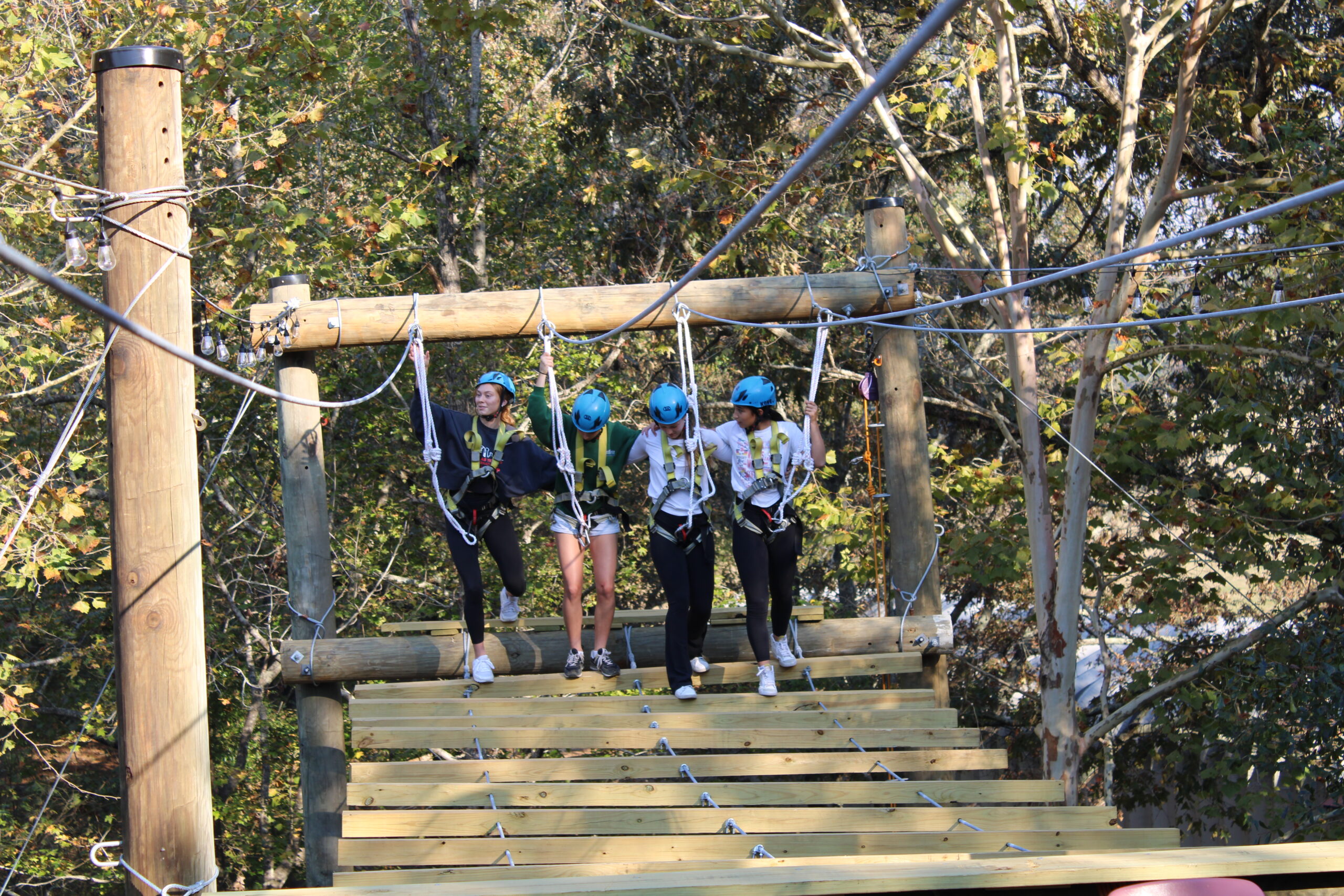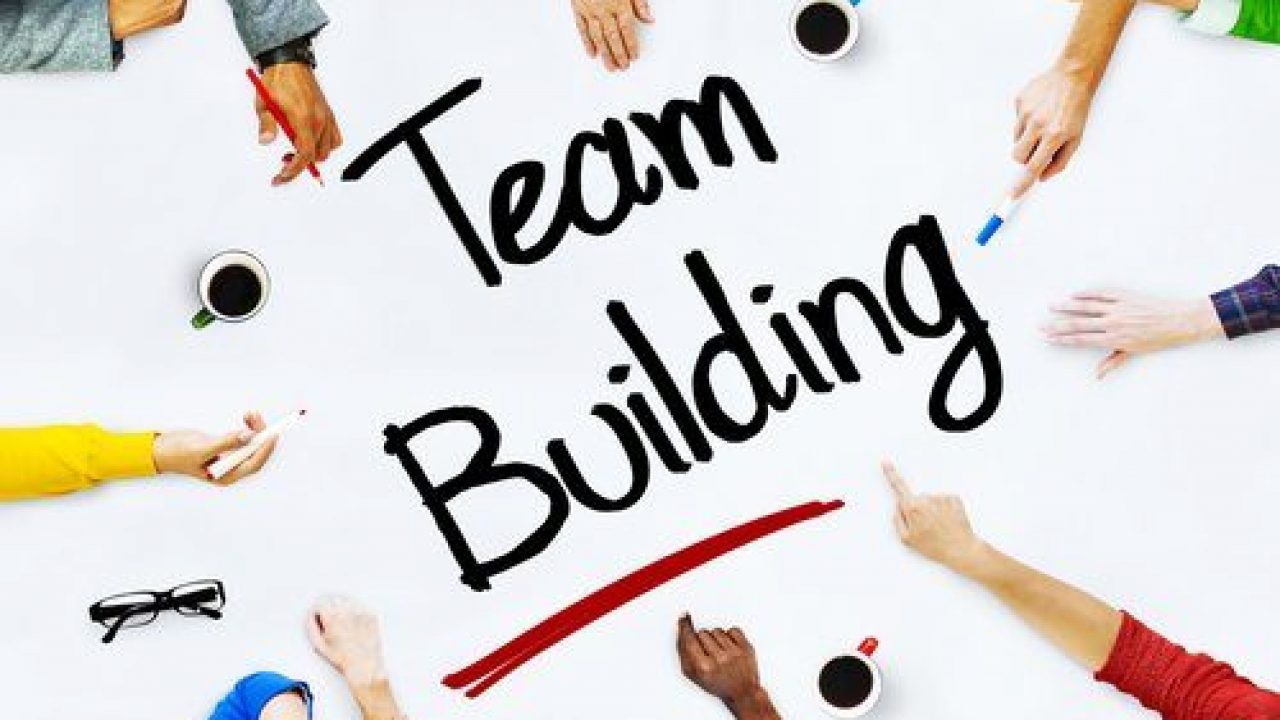Unlock Your Team's Potential with a Dynamic Challenge Course in Alabama
Unlock Your Team's Potential with a Dynamic Challenge Course in Alabama
Blog Article
Discover the Power of Collaboration With a Group Obstacle Course Adventure
Beginning on a group obstacle course adventure can use an unique chance for individuals to witness firsthand the transformative influence of cooperation within a group setting. As teams browse via different obstacles and tasks, truth power of teamwork unfolds, exposing the potential for enhanced communication, strategic preparation, and friendship (Team Challenge Course in Alabama). By taking part in these experiential learning environments, participants are presented with a system to discover the depths of their collaborative capabilities and discover brand-new methods to conquer obstacles jointly
Benefits of Team Difficulty Courses
Involving in group obstacle courses fosters collaboration and boosts communication abilities amongst participants. One substantial advantage of participating in group difficulty training courses is the improvement of team effort abilities.
In addition, group difficulty training courses also aid in establishing management abilities. As individuals deal with various obstacles throughout the training course, individuals usually naturally tackle leadership duties based on their toughness and capabilities (Team Challenge Course in Alabama). This hands-on experience enables them to exercise decision-making, analytic, and delegation within an encouraging atmosphere
In addition, these programs promote depend on and friendship amongst staff member. By depending on each other to get over obstacles, participants construct depend on and establish stronger connections. This sense of camaraderie extends past the course, positively affecting synergy and partnership in numerous settings, including the work environment.
Enhancing Team Communication Abilities
In the context of team challenge training courses, the development of reliable group interaction skills plays an essential role in optimizing collaborative efforts and accomplishing shared purposes. Clear and concise communication is necessary for groups to efficiently navigate the challenges offered in these courses. By improving communication skills, team members can communicate their ideas, pay attention proactively to others, give feedback constructively, and coordinate their actions successfully.
Reliable interaction promotes a supportive atmosphere where team members really feel comfortable revealing their ideas, requesting for aid when needed, and offering assistance to their peers. It assists in developing depend on amongst employee, which is crucial for smooth collaboration and analytical. In addition, boosted interaction minimizes the chance of misunderstandings, conflicts, and errors that can emerge when messages are uncertain or misunderstood.
Through team challenge training courses that highlight communication skills, participants can practice various forms of communication, such as verbal, non-verbal, and active listening. These experiences not just enhance teamwork during the program yet also give valuable abilities that can be moved to the individuals' personal and expert lives.
Methods for Efficient Cooperation
What are the key approaches that promote efficient collaboration among team members in difficult atmospheres? One essential approach is developing open lines of interaction where group members really feel comfy sharing their ideas, problems, and comments.

Establishing clear goals and assumptions is additionally vital for efficient collaboration in tough environments. When staff member recognize what is anticipated of them and have a clear roadmap to follow, they can straighten their initiatives in the direction of an usual goal. On a regular basis examining progression, providing useful feedback, and making necessary modifications along the method are essential elements of effective cooperation in tough environments.
Conquering Obstacles With Each Other
To properly browse and dominate difficulties as a cohesive unit, teams need to use the techniques for effective collaboration focused in challenging environments. When encountered with challenges throughout a group challenge training course experience, individuals need to come together, attracting upon each team participant's strengths to get over the obstacles jointly. Communication plays an essential role in this procedure, as employee have to successfully share ideas, pay attention actively, and supply assistance to each other. By promoting an environment of open communication, groups can address obstacles head-on, brainstorm options, and adjust rapidly to transforming circumstances.
Furthermore, team effort is necessary for overcoming obstacles together. Each team member brings a distinct point of view and ability to the table, enabling a varied series of analytical methods. Urging inclusivity and valuing each employee's contributions cultivates a feeling of unity and enhances spirits, inevitably leading to more effective challenge conquering. With collaboration, shared duty, and a helpful group dynamic, groups can browse difficulties with Read More Here self-confidence and emerge stronger and a lot more unified beyond.

Structure Count On and Friendship
Developing a structure of count on and camaraderie among group participants is essential for fostering a collective and supportive atmosphere for getting over difficulties together. Count on develops the basis of efficient interaction, allowing staff member to really feel risk-free revealing their ideas, worries, and responses. When people trust one another, they are more probable to collaborate freely, share sources, and job towards usual goals. Camaraderie, on the other hand, enhances the emotional bonds within a team, causing increased morale, commitment, and a sense of belonging.
Building trust fund and camaraderie often entails appealing in shared experiences that need synergy, interaction, and mutual assistance. Group difficulty courses provide an outstanding possibility for teams to bond with facing physical and mental challenges with each other. These experiences produce long lasting memories and inside jokes that enhance the team's unity and cohesion. By investing time and initiative into tasks that promote trust fund and sociability, teams can develop a solid structure that enhances their capability to work together efficiently and attain success.
Conclusion
Finally, team difficulty training courses offer various advantages for improving interaction abilities, developing efficient cooperation techniques, getting over challenges with each other, and structure trust fund and friendship amongst staff member. By joining these journey programs, teams can strengthen their partnerships, improve their problem-solving abilities, and interact much more effectively towards typical goals. Collaboration is an effective tool that can bring about greater success and communication within a group.

Group difficulty training courses provide an outstanding possibility for groups to bond through encountering physical and mental obstacles together.In conclusion, group difficulty training courses supply various benefits for enhancing interaction skills, developing efficient collaboration strategies, getting rid of obstacles with each other, and structure trust fund and camaraderie amongst group members.
Report this page